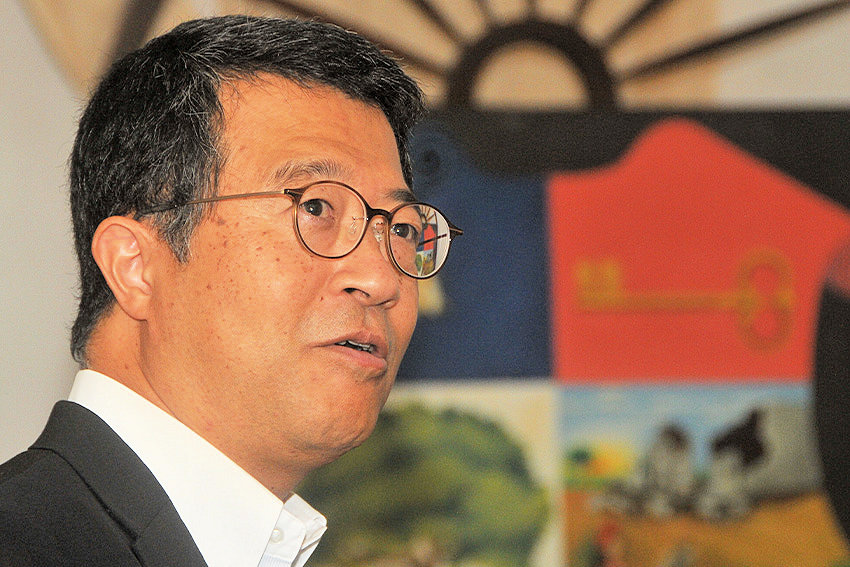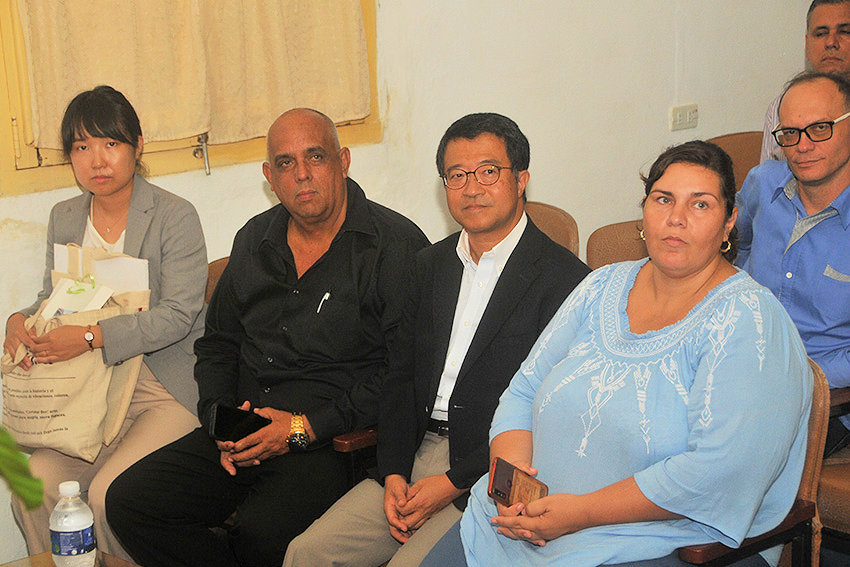
His Excellency Hirata Kenji, ambassador of Japan in Cuba, participated in the 18th National Workshop on Eclecticism and Popular Tradition -held mid-week at the Major General Vicente García Provincial Museum-, with a presentation on the traditional architecture of that country.
Las Tunas, Cuba.- In dialogue with the press, the diplomat expressed his enthusiasm for exchanging cultural expressions of our nations. Although he is not an architect, confessed himself fond of this art, and stated some peculiarities that distinguish it in the Asian territory.
"Architecture is an important expression of the culture and identity of the peoples. Cuban architecture uses cement, stones, and other durable materials; while Japanese architecture is basically made of wood, although it also includes earth, ceramics..., and shows an influence of Chinese architecture," he pointed out.
His lecture showed his passion for the creations that are the result of art and the technique of designing, projecting, and constructing buildings and public spaces, and became an approach to the characteristics of emblematic constructions of the Japanese nation such as the Nijo Castle (1603), declared a World Heritage Site of Humanity by UNESCO. He also spoke about architectural features of Buddhist and Shinto temples, issues inherent to the cults in those places, styles of buildings, and other interesting data.
 During the event, the son of the so-called Country of the Rising Sun recognized Bertha Sabrina Echavarría Agramonte, a student at the El Cucalambé Professional Art School, who with her work La Selfie y el Pozo obtained a mention in the 4-Koma Contest (Name given to the mangas of four vignettes), which results were announced in the Wallonia Showcase, as part of the celebrations of the Japanese Culture Day in Havana.
During the event, the son of the so-called Country of the Rising Sun recognized Bertha Sabrina Echavarría Agramonte, a student at the El Cucalambé Professional Art School, who with her work La Selfie y el Pozo obtained a mention in the 4-Koma Contest (Name given to the mangas of four vignettes), which results were announced in the Wallonia Showcase, as part of the celebrations of the Japanese Culture Day in Havana.
Another significant moment of the 18th National Workshop on Eclecticism and Popular Tradition was the presentation of the 2023 Annual Conservation and Restoration Award, which this time corresponded to the Industrial Heritage section and went to the Trapiche Las Peloncitas, owned by the Téllez Ortiz family.
This event -attended by architects, historians, and other artists- promotes the socialization of research related to the defense of heritage, and culture, in general. At the recent meeting, for example, architect Domingo Alás presented his restoration project for the Major Parish Church of San Gerónimo and its urban environment; while Darlenis Urquiola, provincial director of Culture, shared her study Material and immaterial bearers of the Estampas Tuneras Traditional Carnival Troupe, known as Zabala.